Discover Hanoi’s Top 9 Traditional Craft Villages: A Cultural Journey
Hanoi, Vietnam’s bustling capital, is surrounded by a tapestry of traditional craftsmanship. The surrounding villages are custodians of a rich cultural heritage, showcasing unique artisanal skills passed down through generations. Here’s a guide to the top nine craft villages near Hanoi that offer an authentic glimpse into Vietnam’s artisanal traditions.
1. Bat Trang Ceramic Village
Address: Left Bank of Red River, Gia Lam District, Hanoi
No exploration of Hanoi’s artisan villages would be complete without a visit to Bat Trang, a village renowned for its ceramic artistry. With a history spanning over 500 years, Bat Trang is not just a cultural landmark but also one of Vietnam’s major ceramic centers. Here, you can observe the intricate process of ceramic making and even try crafting your own pieces under the guidance of skilled artisans. Bat Trang’s ceramics, ranging from spiritual artifacts to contemporary decorative items, are celebrated both locally and abroad.

2. Phu Vinh Bamboo and Rattan Village
Address: Go Dau, Phu Nghia Commune, Chuong My, Hanoi
Located about 27 kilometers from Hanoi, Phu Vinh is famous for its bamboo and rattan weaving. This village’s tradition dates back nearly 400 years. Visitors can explore a diverse array of handcrafted bamboo and rattan products, including bags, baskets, and furniture. Each family in Phu Vinh holds unique secrets of weaving, making the products from this village distinctively varied in color and design.

3. Van Phuc Silk Village
Address: Van Phuc, Ha Dong, Hanoi
Just 10 kilometers from Hanoi, Van Phuc is renowned for its silk weaving. This village is considered the cradle of traditional silk weaving in Vietnam, with nearly 800 households engaged in this craft. Van Phuc offers visitors the chance to witness the entire silk production process and explore the village’s picturesque streets adorned with colorful umbrellas. Don’t miss the opportunity to shop for exquisite silk products, including scarves, ao dais, and various decorative items.
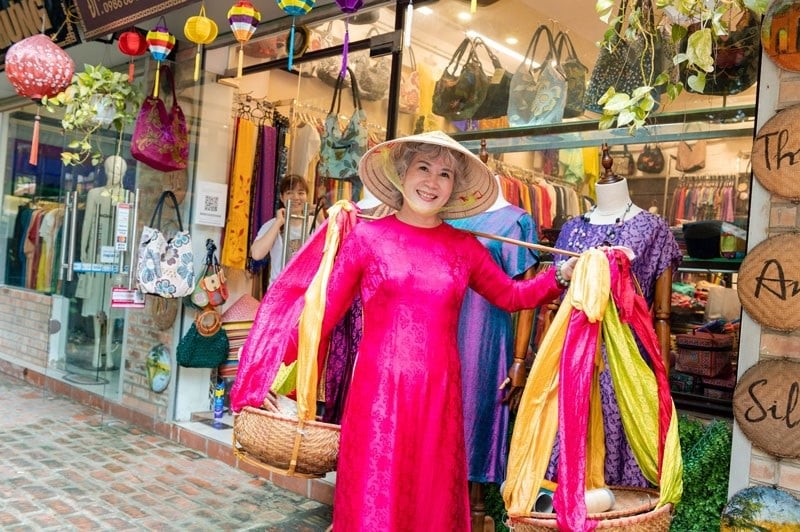
4. Quang Phu Cau Incense Village
Address: Quang Phu Cau Commune, Ung Hoa District, Hanoi
About 35 kilometers from the city center, Quang Phu Cau is famous for its traditional incense-making. The village’s incense sticks are known for their enduring fragrance and intricate production process. Visitors will find vast courtyards filled with red incense, creating a vibrant and photogenic scene. The experience includes learning about the cultural significance of incense and the meticulous crafting techniques involved.
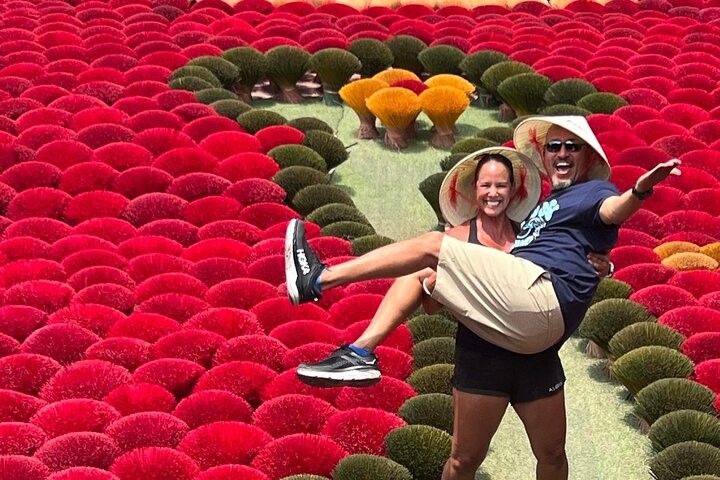
5. Chuong Conical Hat Village
Address: Lang Chuong Street, Phuong Trung, Thanh Oai, Hanoi
Chuong, located approximately 30 kilometers from Hanoi, is famed for its conical hats. With over a millennium of history, Chuong’s hats are not just artisanal products but cultural symbols of Vietnam. Visitors can see the detailed process of hat-making and even participate in crafting their own conical hats. This hands-on experience offers insights into the traditional techniques and artistic skills required to produce these iconic accessories.
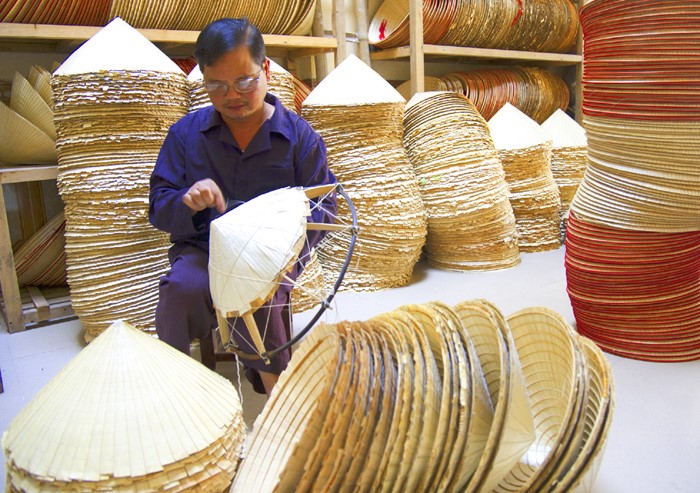
6. Dong Ho Painting Village
Address: Ren Tien Du Village, Bac Ninh
Around 35 kilometers from Hanoi, Dong Ho is celebrated for its traditional woodblock prints, a craft that has been practiced for over 400 years. The village’s paintings are known for their rustic charm and depiction of rural life and Vietnamese folklore. Visitors can observe the meticulous painting process, participate in workshops, and even attend the Dong Ho painting festival held annually in March.

7. Ha Thai Lacquer Village
Address: Lacquer Craft Village Industrial Cluster, Ha Thai, Thuong Tin, Hanoi
Established in the 17th century, Ha Thai is renowned for its lacquerware. The intricate process of lacquer painting involves multiple stages, including cutting, decorating, sanding, and polishing. At Ha Thai, visitors can witness artisans creating vibrant lacquer pieces and learn about the detailed techniques involved in this decorative art.
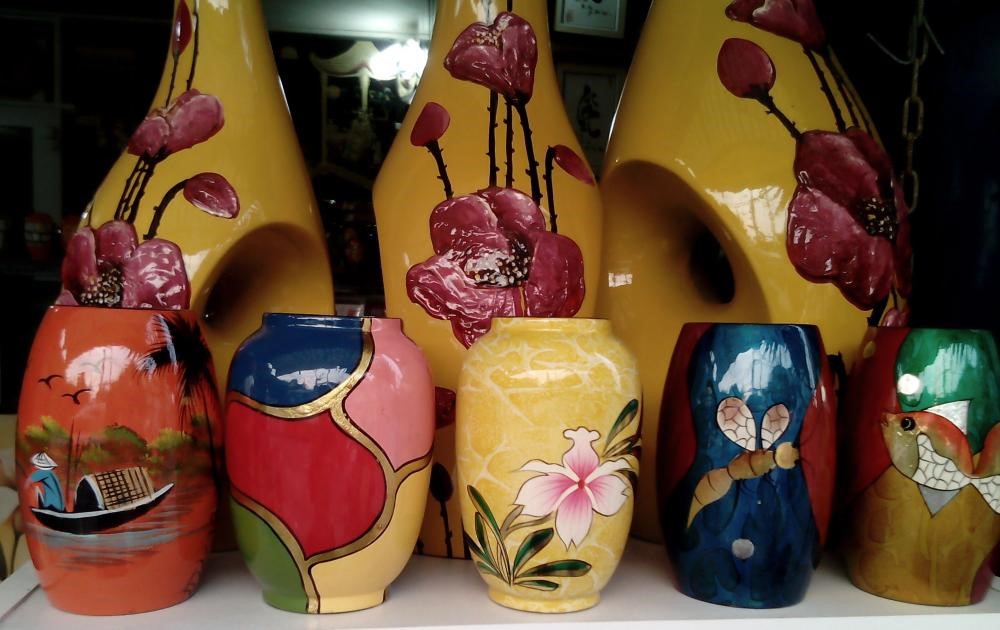
8. Quat Dong Embroidery Village
Address: Quat Dong Commune, Thuong Tin District, Hanoi
Located 25 kilometers from Hanoi, Quat Dong is renowned for its traditional embroidery. Known as the ancestral land of embroidery, this village produces intricate and culturally rich embroidered artworks. Visitors can explore the peaceful village landscape, admire detailed embroidered pieces, and understand the craftsmanship behind this traditional art form.
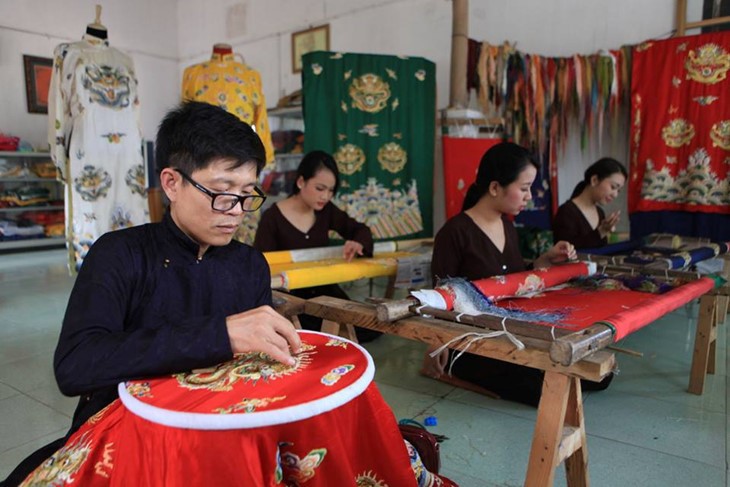
9. Dao Thuc Water Puppet Village
Address: Thuy Lam Commune, Dong Anh District, Hanoi
Approximately 25 kilometers from Hanoi, Dao Thuc is famous for its water puppetry, a unique Vietnamese art form. Visitors can watch traditional water puppet shows and even try their hand at manipulating the puppets. The village’s performances are known for their smooth and rhythmic movements, showcasing the dexterity and creativity of the local puppeteers.
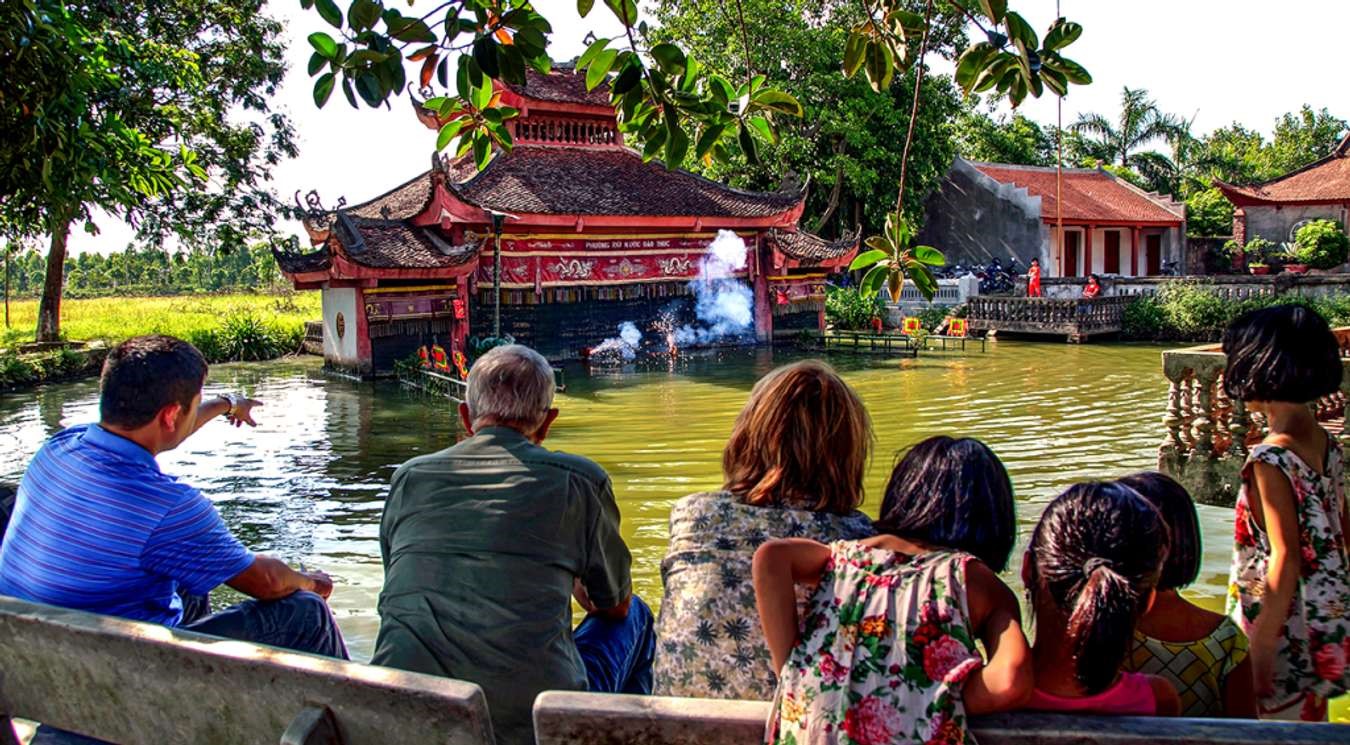
These villages surrounding Hanoi not only preserve ancient techniques but also energize local economies and provide visitors with immersive cultural experiences. From ceramic artistry in Bat Trang to traditional silk weaving in Van Phuc, each village offers a unique journey into Vietnam’s rich artisanal heritage. Explore these crafts, interact with the artisans, and gain a deeper appreciation of Vietnam’s cultural tapestry.


